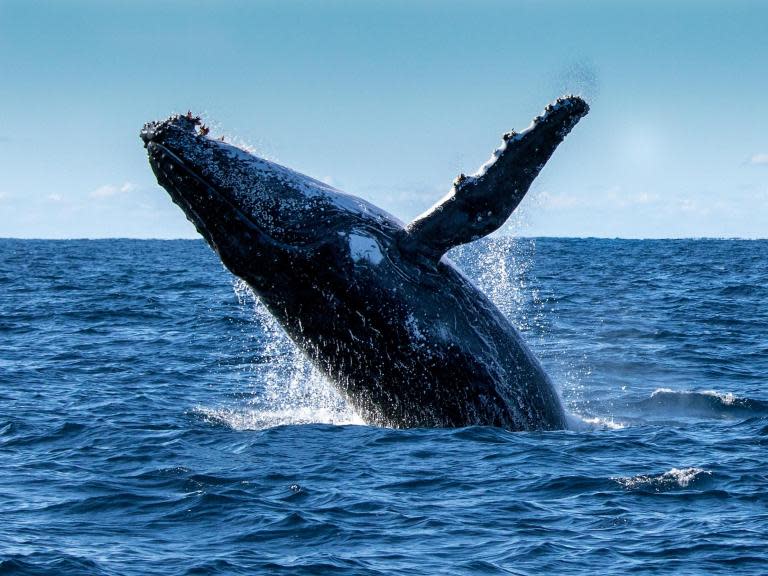Fossil barnacles reveal whales have followed same migration routes for hundreds of millennia
The migration routes of ancient whales have been revealed by examining the remains of tiny creatures that hitched a ride on their backs.
Fossilised barnacles that stick to the bodies of these ocean giants contain chemical traces that scientists have used to track their progress across the world’s oceans.
The results suggest modern whales are still tracing the same long-distance pathways their ancestors have been following for hundreds of thousands of years.
Most whales today travel vast distances from the food-rich waters in the north to warmer seas around Central America and Hawaii to breed.
While experts have suggested these routes may have been established long ago, there has not been enough fossil evidence to support the theory.
Instead of relying on whale bones, the team behind the new study opted for barnacles as a more reliable indicator.
“The signals we found in the fossil barnacles showed us quite clearly that ancient humpback and grey whales were undertaking journeys very similar to those that these whales make today,” said Larry Taylor, a doctoral student at the University of California, Berkeley.
“It seems like the summer breeding and winter feeding migrations have been an integral part of the way of life of these whales for hundreds of thousands of years.”

Specifically, the Pacific coast of Panama appears to have served as a whale meeting point for at least 270,000 years.
While most barnacles glue their hard shells to rocks, there are varieties that are specialised for living on the bodies of whales.
This provides the barnacles with free passage to nutrient-filled waters, and the opportunity to breed with other barnacles when the whales carrying them meet up to mate.
Mr Taylor and his colleagues focused on types of oxygen molecule preserved in the shells of both modern and ancient barnacles.
As the oxygen composition changes depending on where in the ocean whales are, this gives an idea of their movements over time.
Both prehistoric and modern samples yielded measurements that suggested time spent in a variety of different waters, with patterns pointing to a summer feeding season and winter breeding season.
The scientists hope that their technique, published in the journal Proceedings of the National Academy of Sciences, could be used to perform more prehistoric detective work.
“We want to push the technique further back in time and across different whale populations,” said Dr Seth Finnegan, a co-author also based at the University of California, Berkeley. “Hunting for fossil whale barnacles is easier than whales, and they provide a wealth of information waiting to be uncovered.”

 Yahoo News
Yahoo News 

